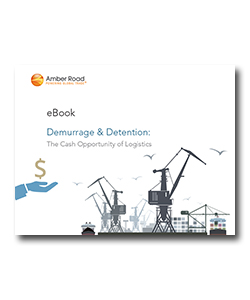Demurrage & Detention: The Cash Opportunity of Logistics
Many companies have made strides in demurrage and detention but more can be done.
In 2014, one shipper paid over $100,000 in demurrage charges, compared to $10,000 in 2013. Average detention and demurrage costs at U.S. ports can exceed $200 per day, making it clear that these costs are more than just carriers looking to “nickel and dime” customers.
Throwing Away Money with Demurrage and Detention
- Do unexpected bills with high detention and demurrage charges make you scream? Could $35 million of detention and demurrage fees be avoided?
- Demurrage and detention fees are more than the incurred costs of doing business, they result in delayed deliveries and payments, lost sales, and lack of product availability. These fees negatively impact cash flow and profitability.
- Demurrage becomes a real problem when fees occur during periods when ports are congested.
- These fees are preventable with better alerts and reporting, clear communication, and proper data management.
Free Time Can Become Very Costly
- Some companies see free time as an advantage, so it’s applied in routing decisions. A company might see free-time as a less costly way to store goods in transit or use onsite port facilities.
- Better visibility of free time can lead to improved transit times, extra time to use somewhere else, and more cost-effective decisions.








